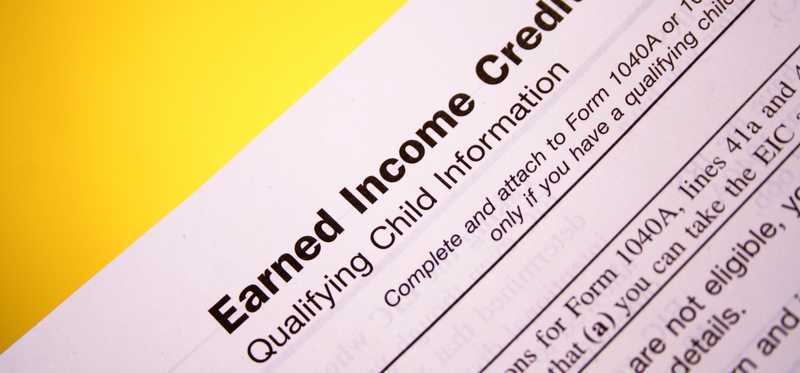8 Tax Breaks Every Parent Needs to Know

8 Tax Breaks Every Parent Needs to Know
Tax time is a great time to be a parent
Kids are expensive. It costs nearly a quarter million dollars to raise a child from birth to age 17, and that doesn’t even include college expenses. It certainly does seem like you’re constantly opening your wallet to pay for yet another thing your child needs.
Still, despite the costs involved in raising them, your children can also provide you with some much needed tax breaks to help defray some of those costs. These eight tax breaks are ones that every parent should know about.
ALSO READ: 5 Tax Breaks You Can Still Claim Now That Tax Reform Has Passed
Previous
Next

1. The Earned Income Tax Credit
The Earned Income Tax Credit is a credit that reduces your taxes owed. Unlike many credits, it is refundable, meaning you can actually get back more from the credit than you pay in taxes. The amount you may receive for the credit depends on:
- Your marital status
- Your tax filing status
- The number of children you have
- Your income level
- How much of your income comes from work vs. investing
For 2018, the maximum credit varies between $530 for those without qualifying children to $6,431 for those with three or more. The Earned Income Tax Credit is aimed towards lower to moderate income people who work (you need at least $1 in earned income to qualify for it). The benefits phase out based on your tax filing status, income and number of children, with households having above $54,884 in adjusted gross income not qualifying at all in 2018.
Previous
Next

2. The Child Care Credit
Uncle Sam is willing to help cover a portion of what it costs you to have your children professionally taken care of so that you can work. Up to $3,000 spent for care for one child or $6,000 for two or more children can be used to calculate the credit. The credit can cover as much as 35% of your eligible child care expenses, if your income is low enough.
The spending must allow you to work or actively look for work, and the amount of your expenses that are covered vary based on your adjusted gross income. If your adjusted gross income is above $43,000, only up to 20% of your eligible spending on child care up to that limit will be returned by the credit. The Child Care Credit is not refundable, so you won’t get more money back from it than you pay in taxes.
Previous
Next

3. Personal exemptions (soon to be defunct)
At least until you file your 2017 taxes, you can claim up to $4,050 per person in personal exemptions -- that cover you, your spouse, and your dependent children. That exemption goes away for tax year 2018, replaced with a larger standard deduction. The personal exemption is a deduction that reduces the amount of your income otherwise subject to income taxes.
Note that if you have a substantial income, those exemptions do phase out. The phase out range depends on your adjusted gross income. That range starts at $156,900 for married filing separately, $261,500 for a single, $287,650 for a head of household, and $313,800 for married filing jointly or qualifying widow(er). Your exemption phases out by 2% for every $2,500 (or $1,250 if married filing separately) above the beginning of that phase out range.
ALSO READ: Will You Get to Claim the Child Tax Credit in 2018?
Previous
Next

4. The Child Tax Credit
Children you have age 16 or younger may qualify for the Child Tax Credit, which in 2017 represents a $1,000 per qualifying credit against your taxes, though there are income phase out ranges on this one as well. For 2017, the phase out range starts at $55,000 for those who are married filing separately, $75,000 for those who are single, head of household, or qualifying widow(er), and $110,000 for those married filing jointly. The phase out is $50 for every $1,000 your modified adjusted gross income is above that level.
With the Tax Cuts and Jobs Act, starting in 2018, the Child Tax Credit increases to $2,000 per child, and the income phase out ranges begin at $200,000 ($400,000 for those who are married filing jointly). In both the 2017 and 2018 versions of the Child Tax Credit, the credit is partially refundable, so it’s possible to get more back than you actually paid in taxes.
ALSO READ: Will You Get to Claim the Child Tax Credit in 2018?
Previous
Next

5. The Lifetime Learning Credit
If you are paying for post-secondary school (college, trade school) for yourself, your spouse, or a dependent child, you might qualify for the Lifetime Learning Credit. This is a tax credit for 20% of the first $10,000 spent per tax return, up to $2,000, on eligible educational expenses like tuition. There is no limit in terms of the number of years you can claim this credit.
Like many such credits, the Lifetime Learning Credit has a phase out range, with it starting at $56,000 (or $112,000 for those married filing jointly).The Lifetime Learning Credit is not refundable, and you cannot claim both the Lifetime Learning Credit and the American Opportunity Tax Credit on the same return.
Previous
Next

6. The American Opportunity Tax Credit
Another tax credit available to those paying for post-secondary school is the American Opportunity Tax Credit. This credit covers up to the first $2,000 and up to 25% of the next $2,000 spent on qualified education expenses. Unlike the Lifetime Learning Credit, the American Opportunity Tax Credit is partially refundable, but you can only claim this credit in the student’s first four years of higher education.
The American Opportunity Tax Credit has a phase out range that starts at $80,000 ($160,000 for those married filing jointly). You cannot claim both the Lifetime Learning Credit and the American Opportunity Tax Credit on the same return.
Previous
Next

7. 529 savings plans
College can be a huge expense, and in addition to the education related credits you can get while paying for the school, you can also get tax benefits saving to pay for school. 529 college saving plans allow you to save for college in a tax deferred manner, with no taxes on the money while it compounds in the account and no taxes if you withdraw it to pay for qualified education expenses. Many states even offer tax deductions for residents that contribute to their state sponsored plan.
You can contribute large amounts to a 529 plan -- perhaps as much as $520,000 depending on plan rules. Still, note that amounts over the annual gift limit ($15,000 in 2018) affect your lifetime estate exemption or require you to pay a gift tax. For those who are feeling particularly generous, note that contributions to a 529 plan must be used to cover qualified education expenses, or else you face taxes on the growth in the plan plus a 10% penalty.
Starting in 2018, 529 savings plans can also be used to pay Kindergarten through twelfth grade education costs, though withdrawals for those expenses are limited to $10,000 per beneficiary per year. Note that your state may not yet have rules in place exempting withdrawals for elementary and high school education expenses from state taxes, so check with your plan administrator first.
Previous
Next

8. Individual Retirement Accounts
If your child has an earned income -- such as from a paper route, lawn mowing service, or summer job -- seriously consider helping your child start an Individual Retirement Account. The compounding in those accounts over the decades your child has between youth and retirement can be phenomenal -- potentially even turning your child into a multimillionaire.
If your child qualifies, he or she can contribute up to $5,500 to an IRA, but no more than the child’s earned income. If your child can contribute to a Roth style IRA, it’s a particularly incredible benefit, as the money that compounds in that IRA can be withdrawn completely tax free in retirement. With somewhere in the neighborhood of five or six decades for that money to compound, that early money can go a long way towards assuring your child’s ultimate financial security.
Previous
Next

You don't need to cover all the costs on your own.
It can be incredibly expensive to raise a family. Fortunately, you don’t have to cover the costs all by yourself. Uncle Sam, and in some cases, your state will kick in to help with deductions, credits, and deferrals to make it a bit less painful to your pocketbook. Just be sure that when you file your taxes, you claim all the credits and deductions you’re eligible for.
Between those tax benefits and taking advantage of tax-deferred savings opportunities for your family, you can help make the costs of raising your children that much more manageable.
The Motley Fool has a disclosure policy.
Previous
Next
Invest Smarter with The Motley Fool
Join Over Half a Million Premium Members Receiving…
- New Stock Picks Each Month
- Detailed Analysis of Companies
- Model Portfolios
- Live Streaming During Market Hours
- And Much More
READ MORE
HOW THE MOTLEY FOOL CAN HELP YOU
-
Premium Investing Guidance
Market beating stocks from our award-winning service
-
The Daily Upside Newsletter
Investment news and high-quality insights delivered straight to your inbox
-
Get Started Investing
You can do it. Successful investing in just a few steps
-
Win at Retirement
Secrets and strategies for the post-work life you want.
-
Find a Broker
Find the right brokerage account for you.
-
Listen to our Podcasts
Hear our experts take on stocks, the market, and how to invest.
Premium Investing Services
Invest better with The Motley Fool. Get stock recommendations, portfolio guidance, and more from The Motley Fool's premium services.